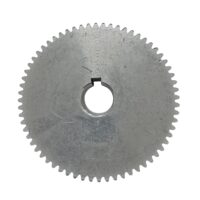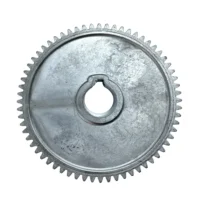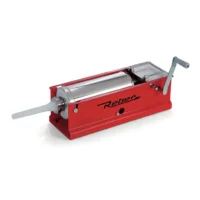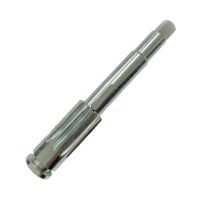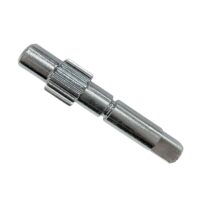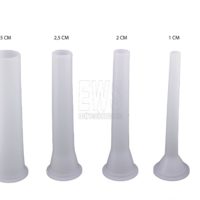-
×
 Pack of 10 Vorwerk Folletto VK 116 - 117 TSIH10 paper bagsEstimated shipping date: 20/11/2025 - 21/11/20252 × 11,00€
Pack of 10 Vorwerk Folletto VK 116 - 117 TSIH10 paper bagsEstimated shipping date: 20/11/2025 - 21/11/20252 × 11,00€ -
×
 REBER iron gear for motor no. 3 400/450 watt 1025AEstimated shipping date: 20/11/2025 - 21/11/20252 × 15,00€
REBER iron gear for motor no. 3 400/450 watt 1025AEstimated shipping date: 20/11/2025 - 21/11/20252 × 15,00€ -
×
 Reber large pestle for tomato squeezer and meat grinder 2005AEstimated shipping date: 20/11/2025 - 21/11/20253 × 7,12€
Reber large pestle for tomato squeezer and meat grinder 2005AEstimated shipping date: 20/11/2025 - 21/11/20253 × 7,12€ -
×
 COP063 gazebo cover GAZ063Estimated shipping date: 03/12/2025 - 13/12/20253 × 229,00€
COP063 gazebo cover GAZ063Estimated shipping date: 03/12/2025 - 13/12/20253 × 229,00€ -
×
 Reber electric tomato squeezer No. 3 450 Watt 9008NEstimated shipping date: 20/11/2025 - 21/11/20252 × 199,90€
Reber electric tomato squeezer No. 3 450 Watt 9008NEstimated shipping date: 20/11/2025 - 21/11/20252 × 199,90€ -
×
 Reber small toothed pin old bagging machine 6511OLDEstimated shipping date: 20/11/2025 - 21/11/20253 × 40,40€
Reber small toothed pin old bagging machine 6511OLDEstimated shipping date: 20/11/2025 - 21/11/20253 × 40,40€ -
×
 Paini Nove bidet mixer tap chrome 09CR306Estimated shipping date: 20/11/2025 - 21/11/20251 × 59,00€
Paini Nove bidet mixer tap chrome 09CR306Estimated shipping date: 20/11/2025 - 21/11/20251 × 59,00€ -
×
 Paini Nove medium basin mixer 09CR211MESREstimated shipping date: 20/11/2025 - 21/11/20251 × 61,00€
Paini Nove medium basin mixer 09CR211MESREstimated shipping date: 20/11/2025 - 21/11/20251 × 61,00€ -
×
 Reber meat mincer accessory No. 22 cast iron long neck optional 8800NEstimated shipping date: 20/11/2025 - 21/11/20251 × 145,00€
Reber meat mincer accessory No. 22 cast iron long neck optional 8800NEstimated shipping date: 20/11/2025 - 21/11/20251 × 145,00€ -
×
 Reber meat mincer accessory no. 22 cast iron short neck optional 8800NCEstimated shipping date: 20/11/2025 - 21/11/20252 × 145,00€
Reber meat mincer accessory no. 22 cast iron short neck optional 8800NCEstimated shipping date: 20/11/2025 - 21/11/20252 × 145,00€ -
×
 Warranty extension for household appliances 3 years up to 1000 EuroEstimated shipping date: 20/11/2025 - 21/11/20253 × 64,00€
Warranty extension for household appliances 3 years up to 1000 EuroEstimated shipping date: 20/11/2025 - 21/11/20253 × 64,00€ -
×
 Reber motor flange gasket no. 3 450 Watt 1041AEstimated shipping date: 20/11/2025 - 21/11/20253 × 6,96€
Reber motor flange gasket no. 3 450 Watt 1041AEstimated shipping date: 20/11/2025 - 21/11/20253 × 6,96€ -
×
 Reber long-life engine lubricating oil bottle 1073AEstimated shipping date: 20/11/2025 - 21/11/20252 × 7,90€
Reber long-life engine lubricating oil bottle 1073AEstimated shipping date: 20/11/2025 - 21/11/20252 × 7,90€ -
×
 Paini Nove external shower mixer 09CR511Estimated shipping date: 20/11/2025 - 21/11/20256 × 58,00€
Paini Nove external shower mixer 09CR511Estimated shipping date: 20/11/2025 - 21/11/20256 × 58,00€ -
×
 Reber electric tomato squeezer No. 5 500 Watt 9004NEstimated shipping date: 20/11/2025 - 21/11/20252 × 299,00€
Reber electric tomato squeezer No. 5 500 Watt 9004NEstimated shipping date: 20/11/2025 - 21/11/20252 × 299,00€ -
×
 Imperia Pasta Facile pasta machine motorEstimated shipping date: 20/11/2025 - 21/11/20254 × 79,00€
Imperia Pasta Facile pasta machine motorEstimated shipping date: 20/11/2025 - 21/11/20254 × 79,00€ -
×
 Reber external oil seal for geared motor No. 5 1027AEstimated shipping date: 20/11/2025 - 21/11/20255 × 7,00€
Reber external oil seal for geared motor No. 5 1027AEstimated shipping date: 20/11/2025 - 21/11/20255 × 7,00€ -
×
 Paini Nove washbasin mixer high type 09CR211LLSREstimated shipping date: 20/11/2025 - 21/11/20254 × 87,00€
Paini Nove washbasin mixer high type 09CR211LLSREstimated shipping date: 20/11/2025 - 21/11/20254 × 87,00€ -
×
 Vegetable grater attachment for Artus S15-S25Estimated shipping date: 25/11/2025 - 02/12/20251 × 19,00€
Vegetable grater attachment for Artus S15-S25Estimated shipping date: 25/11/2025 - 02/12/20251 × 19,00€ -
×
 Paini Pilot 04CR105P1 bath tub mixer with hand showerEstimated shipping date: 20/11/2025 - 21/11/20252 × 39,00€
Paini Pilot 04CR105P1 bath tub mixer with hand showerEstimated shipping date: 20/11/2025 - 21/11/20252 × 39,00€ -
×
 Artus E01 low-speed horizontal juice extractorEstimated shipping date: 25/11/2025 - 02/12/20251 × 89,90€
Artus E01 low-speed horizontal juice extractorEstimated shipping date: 25/11/2025 - 02/12/20251 × 89,90€ -
×
 Reber electric tomato squeezer No. 5 1200 Watt 9000NPSPEstimated shipping date: 20/11/2025 - 21/11/20251 × 479,00€
Reber electric tomato squeezer No. 5 1200 Watt 9000NPSPEstimated shipping date: 20/11/2025 - 21/11/20251 × 479,00€ -
×
 Reber meat grinder No. 22 electric 600 W HP 0.80 9500N long neckEstimated shipping date: 20/11/2025 - 21/11/20256 × 399,00€
Reber meat grinder No. 22 electric 600 W HP 0.80 9500N long neckEstimated shipping date: 20/11/2025 - 21/11/20256 × 399,00€ -
×
 Reber electric tomato squeezer No. 5 600 Watt 9000NEstimated shipping date: 20/11/2025 - 21/11/20251 × 345,00€
Reber electric tomato squeezer No. 5 600 Watt 9000NEstimated shipping date: 20/11/2025 - 21/11/20251 × 345,00€ -
×
 Reber meat mincer accessory no. 32 cast iron optional 8830NEstimated shipping date: 20/11/2025 - 21/11/20251 × 229,00€
Reber meat mincer accessory no. 32 cast iron optional 8830NEstimated shipping date: 20/11/2025 - 21/11/20251 × 229,00€ -
×
 Reber soldering bar replacement Family Salvaspesa KIT6808Estimated shipping date: 20/11/2025 - 21/11/20251 × 20,99€
Reber soldering bar replacement Family Salvaspesa KIT6808Estimated shipping date: 20/11/2025 - 21/11/20251 × 20,99€ -
×
 Imperia FoglioChef silicone kneading matEstimated shipping date: 20/11/2025 - 21/11/20253 × 30,51€
Imperia FoglioChef silicone kneading matEstimated shipping date: 20/11/2025 - 21/11/20253 × 30,51€ -
×
 Mincer attachment for Artus S15-S25Estimated shipping date: 25/11/2025 - 02/12/20251 × 25,00€
Mincer attachment for Artus S15-S25Estimated shipping date: 25/11/2025 - 02/12/20251 × 25,00€ -
×
 Reber electric meat grinder No. 32 1200 Watt 1.5 HP 9504NSPEstimated shipping date: 20/11/2025 - 21/11/20251 × 615,00€
Reber electric meat grinder No. 32 1200 Watt 1.5 HP 9504NSPEstimated shipping date: 20/11/2025 - 21/11/20251 × 615,00€ -
×
 Reber meat grinder No. 12 electric 500 W HP 0.40 9501NEstimated shipping date: 25/11/2025 - 02/12/20252 × 339,00€
Reber meat grinder No. 12 electric 500 W HP 0.40 9501NEstimated shipping date: 25/11/2025 - 02/12/20252 × 339,00€ -
×
 Tomato squeezer accessory for Artus S15-S25-T25-T30Estimated shipping date: 20/11/2025 - 21/11/20254 × 49,00€
Tomato squeezer accessory for Artus S15-S25-T25-T30Estimated shipping date: 20/11/2025 - 21/11/20254 × 49,00€ -
×
 Reber gear motor 500 600 1200 Watt aluminium 1020SEREstimated shipping date: 20/11/2025 - 21/11/20252 × 32,00€
Reber gear motor 500 600 1200 Watt aluminium 1020SEREstimated shipping date: 20/11/2025 - 21/11/20252 × 32,00€ -
×
 Reber meat grinder No. 22 electric 600 W HP 0.80 9500NC short modelEstimated shipping date: 20/11/2025 - 21/11/20253 × 399,00€
Reber meat grinder No. 22 electric 600 W HP 0.80 9500NC short modelEstimated shipping date: 20/11/2025 - 21/11/20253 × 399,00€ -
×
 Reber meat mincer accessory No. 12 cast iron optional 8811NEstimated shipping date: 25/11/2025 - 02/12/20251 × 113,00€
Reber meat mincer accessory No. 12 cast iron optional 8811NEstimated shipping date: 25/11/2025 - 02/12/20251 × 113,00€ -
×
 Reber external oil seal gearmotor No. 3 1030AEstimated shipping date: 20/11/2025 - 21/11/20253 × 6,50€
Reber external oil seal gearmotor No. 3 1030AEstimated shipping date: 20/11/2025 - 21/11/20253 × 6,50€ -
×
 Reber cast iron tomato squeezer body no. 5 replacement 2000LEstimated shipping date: 20/11/2025 - 21/11/20251 × 48,00€
Reber cast iron tomato squeezer body no. 5 replacement 2000LEstimated shipping date: 20/11/2025 - 21/11/20251 × 48,00€ -
×
 Reber tomato squeezer accessory no. 5 optional 8700NEstimated shipping date: 20/11/2025 - 21/11/20251 × 114,00€
Reber tomato squeezer accessory no. 5 optional 8700NEstimated shipping date: 20/11/2025 - 21/11/20251 × 114,00€ -
×
 Reber Family 9700N vacuum food machineEstimated shipping date: 25/11/2025 - 02/12/20251 × 169,00€
Reber Family 9700N vacuum food machineEstimated shipping date: 25/11/2025 - 02/12/20251 × 169,00€ -
×
 Reber three-gear steel series code 1021SEREstimated shipping date: 20/11/2025 - 21/11/20253 × 59,00€
Reber three-gear steel series code 1021SEREstimated shipping date: 20/11/2025 - 21/11/20253 × 59,00€ -
×
 REBER tomato squeezer propeller 3 acetal resin 3001PEstimated shipping date: 20/11/2025 - 21/11/20251 × 21,12€
REBER tomato squeezer propeller 3 acetal resin 3001PEstimated shipping date: 20/11/2025 - 21/11/20251 × 21,12€ -
×
 Reber replacement Family Salvaspendesa KIT6804 pair of gasketsEstimated shipping date: 20/11/2025 - 21/11/20251 × 11,26€
Reber replacement Family Salvaspendesa KIT6804 pair of gasketsEstimated shipping date: 20/11/2025 - 21/11/20251 × 11,26€ -
×
 Paini Pilot 04CR211P1 chrome washbasin mixerEstimated shipping date: 20/11/2025 - 21/11/20252 × 32,00€
Paini Pilot 04CR211P1 chrome washbasin mixerEstimated shipping date: 20/11/2025 - 21/11/20252 × 32,00€ -
×
 REBER optional vegetable grater accessory for motor no. 3 400/450 Watt ARTUS ORVEstimated shipping date: 25/11/2025 - 02/12/20251 × 62,00€
REBER optional vegetable grater accessory for motor no. 3 400/450 Watt ARTUS ORVEstimated shipping date: 25/11/2025 - 02/12/20251 × 62,00€ -
×
 3-year appliance warranty extension up to 250 EuroEstimated shipping date: 20/11/2025 - 21/11/20251 × 39,00€
3-year appliance warranty extension up to 250 EuroEstimated shipping date: 20/11/2025 - 21/11/20251 × 39,00€ -
×
 REBER tomato squeezer accessory no. 3 optional 8710NEstimated shipping date: 20/11/2025 - 21/11/20251 × 85,00€
REBER tomato squeezer accessory no. 3 optional 8710NEstimated shipping date: 20/11/2025 - 21/11/20251 × 85,00€ -
×
 Paini Pilot concealed shower mixer chrome 04CR690Estimated shipping date: 20/11/2025 - 21/11/20251 × 28,00€
Paini Pilot concealed shower mixer chrome 04CR690Estimated shipping date: 20/11/2025 - 21/11/20251 × 28,00€ -
×
 REBER buffer with seal for bagging machine 3-5-8 kg 6505AEstimated shipping date: 20/11/2025 - 21/11/20251 × 19,16€
REBER buffer with seal for bagging machine 3-5-8 kg 6505AEstimated shipping date: 20/11/2025 - 21/11/20251 × 19,16€
Subtotal: 11.201,50€

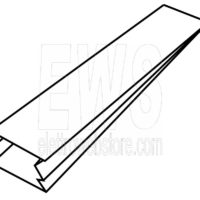 Pack of 10 Vorwerk Folletto VK 116 - 117 TSIH10 paper bags
Pack of 10 Vorwerk Folletto VK 116 - 117 TSIH10 paper bags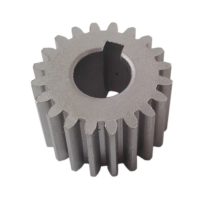 REBER iron gear for motor no. 3 400/450 watt 1025A
REBER iron gear for motor no. 3 400/450 watt 1025A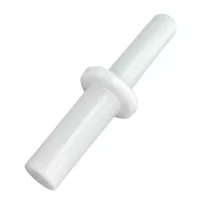 Reber large pestle for tomato squeezer and meat grinder 2005A
Reber large pestle for tomato squeezer and meat grinder 2005A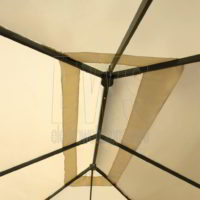 COP063 gazebo cover GAZ063
COP063 gazebo cover GAZ063 Reber electric tomato squeezer No. 3 450 Watt 9008N
Reber electric tomato squeezer No. 3 450 Watt 9008N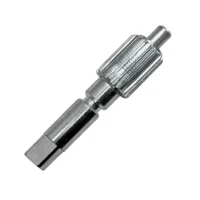 Reber small toothed pin old bagging machine 6511OLD
Reber small toothed pin old bagging machine 6511OLD Paini Nove bidet mixer tap chrome 09CR306
Paini Nove bidet mixer tap chrome 09CR306 Paini Nove medium basin mixer 09CR211MESR
Paini Nove medium basin mixer 09CR211MESR Reber meat mincer accessory No. 22 cast iron long neck optional 8800N
Reber meat mincer accessory No. 22 cast iron long neck optional 8800N Reber meat mincer accessory no. 22 cast iron short neck optional 8800NC
Reber meat mincer accessory no. 22 cast iron short neck optional 8800NC Warranty extension for household appliances 3 years up to 1000 Euro
Warranty extension for household appliances 3 years up to 1000 Euro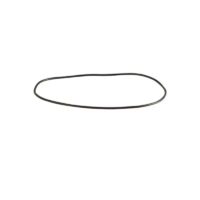 Reber motor flange gasket no. 3 450 Watt 1041A
Reber motor flange gasket no. 3 450 Watt 1041A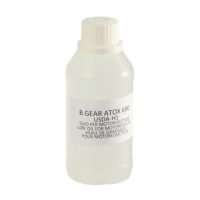 Reber long-life engine lubricating oil bottle 1073A
Reber long-life engine lubricating oil bottle 1073A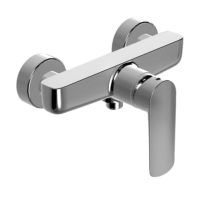 Paini Nove external shower mixer 09CR511
Paini Nove external shower mixer 09CR511 Reber electric tomato squeezer No. 5 500 Watt 9004N
Reber electric tomato squeezer No. 5 500 Watt 9004N Imperia Pasta Facile pasta machine motor
Imperia Pasta Facile pasta machine motor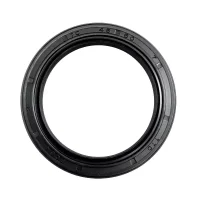 Reber external oil seal for geared motor No. 5 1027A
Reber external oil seal for geared motor No. 5 1027A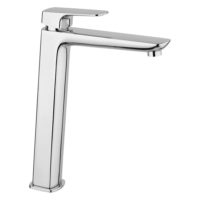 Paini Nove washbasin mixer high type 09CR211LLSR
Paini Nove washbasin mixer high type 09CR211LLSR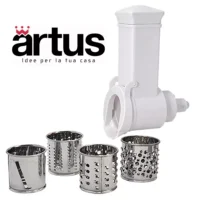 Vegetable grater attachment for Artus S15-S25
Vegetable grater attachment for Artus S15-S25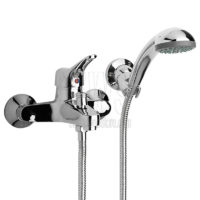 Paini Pilot 04CR105P1 bath tub mixer with hand shower
Paini Pilot 04CR105P1 bath tub mixer with hand shower Artus E01 low-speed horizontal juice extractor
Artus E01 low-speed horizontal juice extractor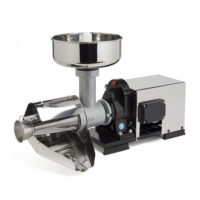 Reber electric tomato squeezer No. 5 1200 Watt 9000NPSP
Reber electric tomato squeezer No. 5 1200 Watt 9000NPSP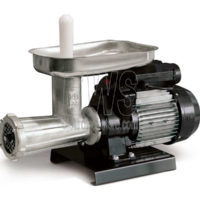 Reber meat grinder No. 22 electric 600 W HP 0.80 9500N long neck
Reber meat grinder No. 22 electric 600 W HP 0.80 9500N long neck Reber electric tomato squeezer No. 5 600 Watt 9000N
Reber electric tomato squeezer No. 5 600 Watt 9000N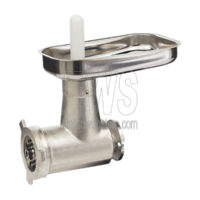 Reber meat mincer accessory no. 32 cast iron optional 8830N
Reber meat mincer accessory no. 32 cast iron optional 8830N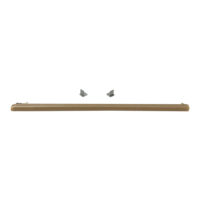 Reber soldering bar replacement Family Salvaspesa KIT6808
Reber soldering bar replacement Family Salvaspesa KIT6808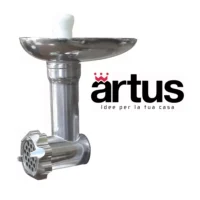 Mincer attachment for Artus S15-S25
Mincer attachment for Artus S15-S25 Reber electric meat grinder No. 32 1200 Watt 1.5 HP 9504NSP
Reber electric meat grinder No. 32 1200 Watt 1.5 HP 9504NSP Reber meat grinder No. 12 electric 500 W HP 0.40 9501N
Reber meat grinder No. 12 electric 500 W HP 0.40 9501N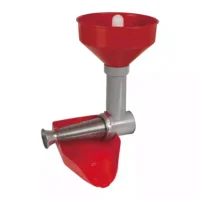 Tomato squeezer accessory for Artus S15-S25-T25-T30
Tomato squeezer accessory for Artus S15-S25-T25-T30 Reber gear motor 500 600 1200 Watt aluminium 1020SER
Reber gear motor 500 600 1200 Watt aluminium 1020SER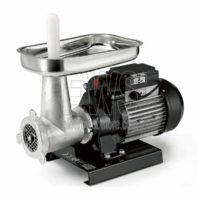 Reber meat grinder No. 22 electric 600 W HP 0.80 9500NC short model
Reber meat grinder No. 22 electric 600 W HP 0.80 9500NC short model Reber meat mincer accessory No. 12 cast iron optional 8811N
Reber meat mincer accessory No. 12 cast iron optional 8811N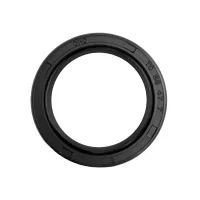 Reber external oil seal gearmotor No. 3 1030A
Reber external oil seal gearmotor No. 3 1030A Reber cast iron tomato squeezer body no. 5 replacement 2000L
Reber cast iron tomato squeezer body no. 5 replacement 2000L Reber tomato squeezer accessory no. 5 optional 8700N
Reber tomato squeezer accessory no. 5 optional 8700N Reber Family 9700N vacuum food machine
Reber Family 9700N vacuum food machine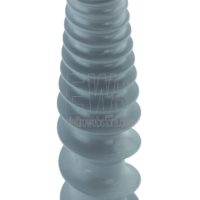 REBER tomato squeezer propeller 3 acetal resin 3001P
REBER tomato squeezer propeller 3 acetal resin 3001P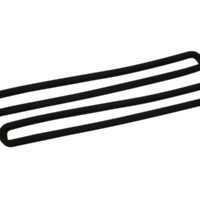 Reber replacement Family Salvaspendesa KIT6804 pair of gaskets
Reber replacement Family Salvaspendesa KIT6804 pair of gaskets Paini Pilot 04CR211P1 chrome washbasin mixer
Paini Pilot 04CR211P1 chrome washbasin mixer REBER optional vegetable grater accessory for motor no. 3 400/450 Watt ARTUS ORV
REBER optional vegetable grater accessory for motor no. 3 400/450 Watt ARTUS ORV 3-year appliance warranty extension up to 250 Euro
3-year appliance warranty extension up to 250 Euro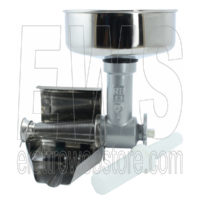 REBER tomato squeezer accessory no. 3 optional 8710N
REBER tomato squeezer accessory no. 3 optional 8710N Paini Pilot concealed shower mixer chrome 04CR690
Paini Pilot concealed shower mixer chrome 04CR690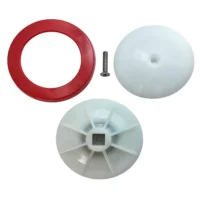 REBER buffer with seal for bagging machine 3-5-8 kg 6505A
REBER buffer with seal for bagging machine 3-5-8 kg 6505A
